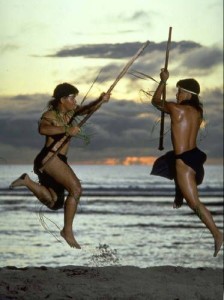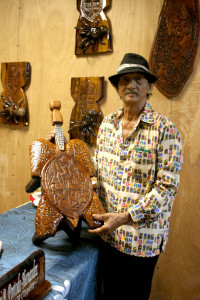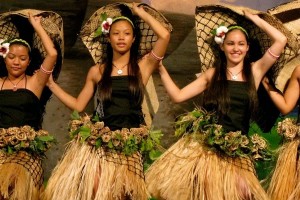12th Festival of Pacific Arts
Guam, May 22nd — June 4th, 2016
“Håfa Iyo-ta, Håfa Guinahå-ta, Håfa Ta Påtte, Dinanña’ Sunidu Siha Giya Pasifiku”
“What We Own, What We Have, What We Share, United Voices of the Pacific”
The Festival of the Pacific Arts (FoPA) has been held every four years since 1972, bringing together artists, performers, and craftsmen from around the Pacific region for two weeks of festivity. It is a major regional cultural event and meeting opportunity in the Pacific, uniting and celebrating its peoples and promoting mutual understanding. The 2016 edition will be hosted by Guam, in whose indigenous Chamorro language the above festival slogan is written. It has been described as the “Olympics of cultural events,” equal in importance with the World Cup of soccer in the Pacific.

The idea of a Festival of Pacific Arts was conceived by the Conference of the South Pacific Commission (now the Secretariat of the Pacific Community) in an attempt to combat the erosion of traditional customs and practices. Since 1972, delegations from 27 Pacific Island nations and territories have come together to share and exchange their cultures at the festival. A delegation of 2,500 performers, artists, and cultural practitioners is expected this year, in addition to thousands of visitors from Asia and festival followers from around the world.
The 27 Pacific island countries and territories expected at the Festival are American Samoa, Australia, Cook Islands, Easter Island, Federated States of Micronesia, Fiji Islands, French Polynesia, Guam, Hawaii, Kiribati, Marshall Islands, Nauru, New Caledonia, New Zealand, Niue, Norfolk Island, Northern Mariana Islands, Palau, Papua New Guinea, Pitcairn Islands, Samoa, Solomon Islands, Tokelau, Tonga, Tuvalu, Vanuatu, and Wallis and Futuna.

The 2016 festival is Guam’s opportunity to showcase its unique Chamorro culture that has survived the colonization of the past and the modernization of the present. Guam’s delegation will contribute traditional Chamorro art forms of jewelry making, weaving, woodcarving, and blacksmithing, as well as folk dances and music. Although a territory of only 177,000 people, Guam is considered the hub of the western Pacific and is undeniably Micronesia’s most cosmopolitan destination–in addition to the indigenous Chamorros and “stateside” Americans, Guam boasts large populations of Filipinos, Chinese, Japanese, Koreans, and Micronesian Islanders, and small communities of Vietnamese, Indians, and Europeans.
Several other important events will occur in parallel to the festival. Ministers of culture from several nations and territories will meet on May 25th to review the Regional Cultural Strategy (2010-2020), and discuss a regional approach to the UNESCO Convention on the Protection and Promotion of the Diversity of Cultural Expressions, adopted in 2005. A forum on culture, arts, and sustainable development in the Pacific will be held from May 30th to June 1st, bringing together practitioners, academics, and partners in heritage and creativity to highlight good practices that demonstrate the universal role of culture and the arts in the areas focused on under the UN Development Program’s Sustainable Development Goals (SDGs) in the Pacific.

The forum aims to provide opportunities to discuss further cooperation, networking, and partnerships in the area of culture and sustainable development. UNESCO will also provide support to the Canoe Summit on May 26th, organized by Nanzan University and the National Research Institute for Cultural Properties in Japan, the Guam Traditional Arts Committee, and the Seafaring Subcommittee of the FoPA. The summit’s aims are to encourage the sharing of knowledge and skills related to traditional seafaring in the Pacific among practitioners, academics, and civil society organizations, and build regional and international cooperation for their safeguarding and transmission. A presentation and demonstration of UNESCO project “The Canoe is the People” will be held at the summit.
Click here to view a schedule of events for this year’s Festival of the Pacific Arts.
















